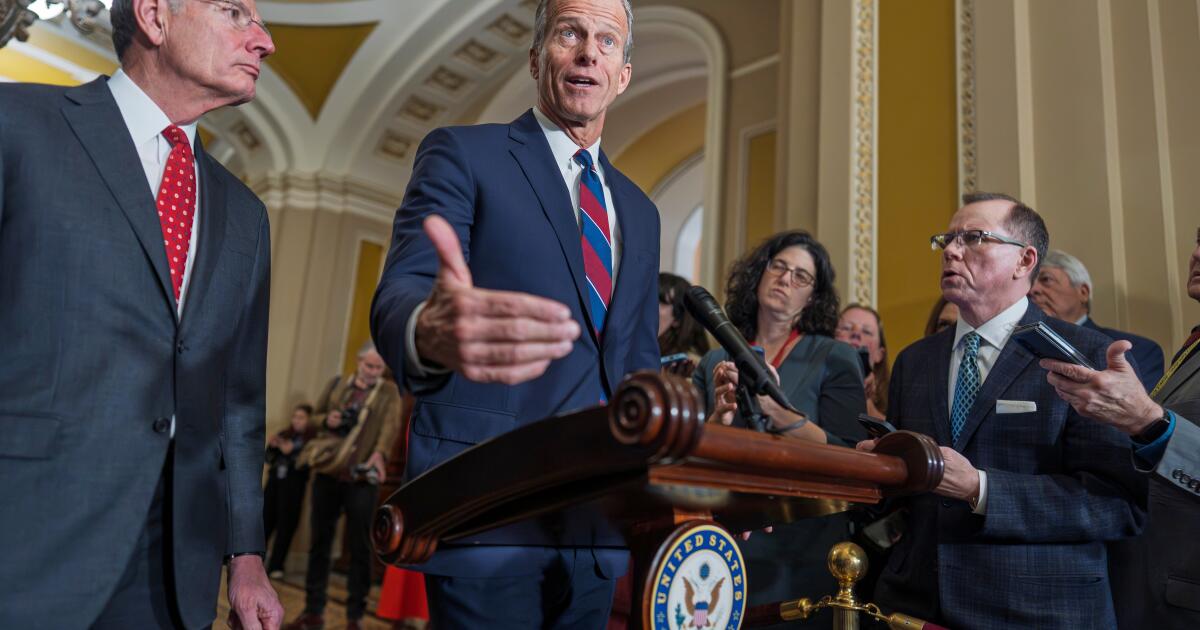WASHINGTON — The Senate on Thursday rejected legislation to extend Affordable Care Act tax credits, essentially guaranteeing that millions of Americans will see a steep rise in costs at the beginning of the year.
Senators rejected a Democratic bill to extend the subsidies for three years and a Republican alternative that would have created new health savings accounts — an unceremonious end to a monthslong effort by Democrats to prevent the COVID-19-era subsidies from expiring on Jan. 1.
Ahead of the votes, Senate Democratic Leader Chuck Schumer of New York warned Republicans that if they did not vote to extend the tax credits, “there won’t be another chance to act,” before premiums rise for many people who buy insurance off the ACA marketplaces.
“Let’s avert a disaster,” Schumer said. “The American people are watching.”
Republicans have argued that Affordable Care Act plans are too expensive and need to be overhauled. The health savings accounts in the GOP bill would give money directly to consumers instead of to insurance companies, an idea that has been echoed by President Trump. But Democrats immediately rejected the plan, saying that the accounts wouldn’t be enough to cover costs for most consumers.
Some Republicans have pushed their colleagues to extend the credits, including Sen. Thom Tillis of North Carolina, who said they should vote for a short-term extension so they can find agreement on the issue next year. “It’s too complicated and too difficult to get done in the limited time that we have left,” Tillis said Wednesday.
But despite the bipartisan desire to continue the credits, Republicans and Democrats have never engaged in meaningful or high-level negotiations on a solution, even after a small group of centrist Democrats struck a deal with Republicans last month to end the 43-day government shutdown in exchange for a vote on extending the ACA subsidies. Most Democratic lawmakers opposed the move as many Republicans made clear that they wanted the tax credits to expire.
The deal raised hopes for bipartisan compromise on healthcare. But that quickly faded with a lack of any real bipartisan talks.
The dueling Senate votes are the latest political messaging exercise in a Congress that has operated almost entirely on partisan terms, as Republicans pushed through a massive tax and spending cuts bill this summer using budget maneuvers that eliminated the need for Democratic votes. They also tweaked Senate rules to push past a Democratic blockade of all of Trump’s nominees.
An intractable issue
The votes were also the latest failed salvo in the debate over the Affordable Care Act, President Obama’s signature law that Democrats passed along party lines in 2010 to expand access to insurance coverage.
Republicans have tried unsuccessfully since then to repeal or overhaul the law, arguing that healthcare is still too expensive. But they have struggled to find an alternative. In the meantime, Democrats have made the policy a central political issue in several elections, betting that the millions of people who buy healthcare on the government marketplaces want to keep their coverage.
“When people’s monthly payments spike next year, they’ll know it was Republicans that made it happen,” Schumer said in November, while making clear that Democrats would not seek compromise.
Even if they view it as a political win, the failed votes are a loss for Democrats who demanded an extension of the benefits as they forced a government shutdown for six weeks in October and November — and for the millions of people facing premium increases on Jan. 1.
Maine Sen. Angus King, an independent who caucuses with Democrats, said the group tried to negotiate with Republicans after the shutdown ended. But, he said, the talks became unproductive when Republicans demanded language adding new limits for abortion coverage that were a “red line” for Democrats. He said Republicans were going to “own these increases.”
A plethora of plans, but little agreement
Republicans have used the looming expiration of the subsidies to renew their longstanding criticisms of the ACA, also called Obamacare, and to try, once more, to agree on what should be done.
Thune announced earlier this week that the GOP conference had decided to vote on the bill led by Louisiana Sen. Bill Cassidy, the chairman of the Senate Health, Labor, Education and Pensions Committee, and Idaho Sen. Mike Crapo, the chairman of the Senate Finance Committee, even as several Republican senators proposed alternate ideas.
In the House, Speaker Mike Johnson (R-La.) has promised a vote next week. Republicans weighed different options in a conference meeting on Wednesday, with no apparent consensus.
Republican moderates in the House who could have competitive reelection bids next year are pushing Johnson to find a way to extend the subsidies. But more conservative members want to see the law overhauled.
Rep. Kevin Kiley (R-Rocklin) has pushed for a temporary extension, which he said could be an opening to take further steps on healthcare.
If they fail to act and healthcare costs go up, the approval rating for Congress “will get even lower,” Kiley said.
Jalonick writes for the Associated Press. AP writers Kevin Freking and Joey Cappelletti contributed to this report.








